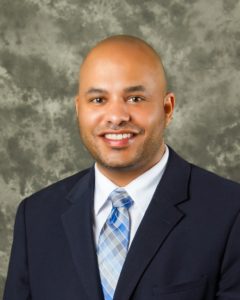The State of Black Education
Accompaniment to the Chicago Urban League’s 2019 State of Black Chicago report.

Jimi Orange
Director, Center for Student Development
The Chicago Urban League’s Center for Student Development offers programs and services to help middle school, high school and college students compete in an increasingly global economy. In 2018, the center served 377 students through college-readiness and access, international travel, STEM and arts-focused programming.
In recent years, Chicago has succeeded at increasing high school graduation rates for students across the city. But praise for those citywide improvements can overshadow issues that still leave many Black students—especially Black boys—unprepared for college.
For one, while more Black students are getting diplomas, they are leaving high school with weaker skills in math, writing and reading than their White and Latinx peers. This shows up in significantly lower average SAT scores. For instance, the average score for Black girls is 897, compared to 953 and 1135 for Latinx and White girls, respectively. The average score for Black boys is even lower at 873.
Among Black students who make it to college, many do not finish or do not come back to Chicago. Of Chicago residents who are 25 years or older, just 12.6% of African Americans have undergraduate degrees, compared to more than 37% of white residents.
The Center for Student Development helps send an average of 40 students off to college each year, and we continue to support them as they matriculate. In 2019, 100% of our active high school seniors were accepted into a college or university. While our students largely achieve their academic targets, we also see some of these bright, talented young people fail to finish college because they were under-prepared either academically, financially or emotionally.
Addressing these three areas will require:
More resources for all Chicago classrooms. A major difference between high-performing schools and lower-performing ones is resources. From elementary to high school, many of our city’s classrooms are significantly underfunded and under-resourced, which limits access to critical learning tools like computers and even textbooks. Properly preparing students to contribute to the city’s future workforce will require more resources from local and state government as well as corporations.
More financial assistance for college students and their families. College is expensive, and scholarships and financial aid often do not cover a student’s true full expenses. We’ve also seen young adults in our Center for Student Development run out of money to pay for college because they are trying to help their families out of dire straits back home.
Socioemotional support for students. Some students find college coursework significantly more challenging than what they’ve been exposed to, and some have never had to take care of themselves away from home. When such issues arise, many first-generation college students have no obvious place to turn for support or advice. Students need more colleges to offer formal programs to help guide them, as well as mentors who are either peers or successful college graduates.
